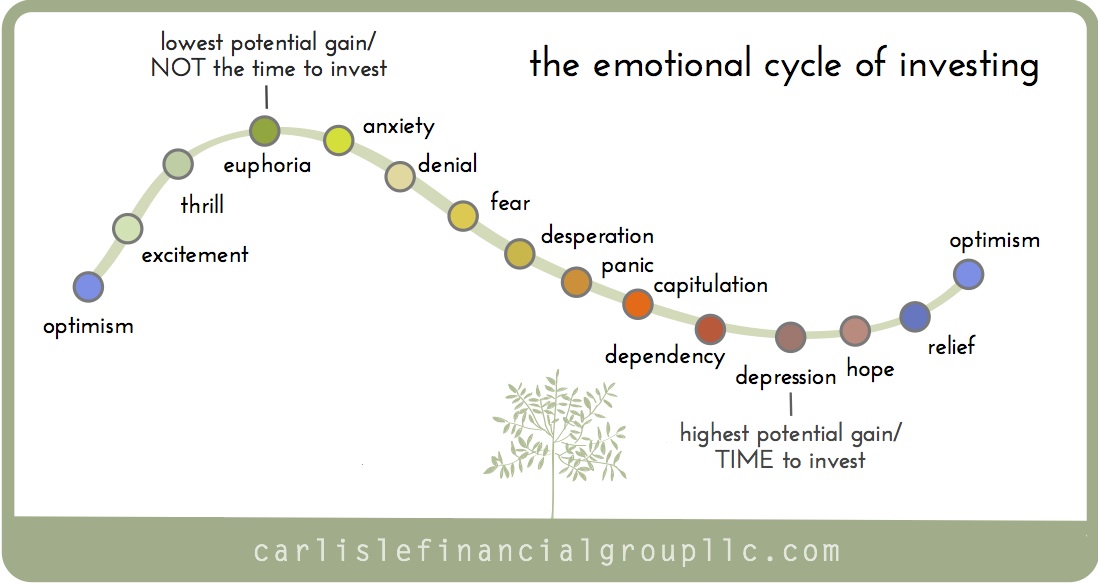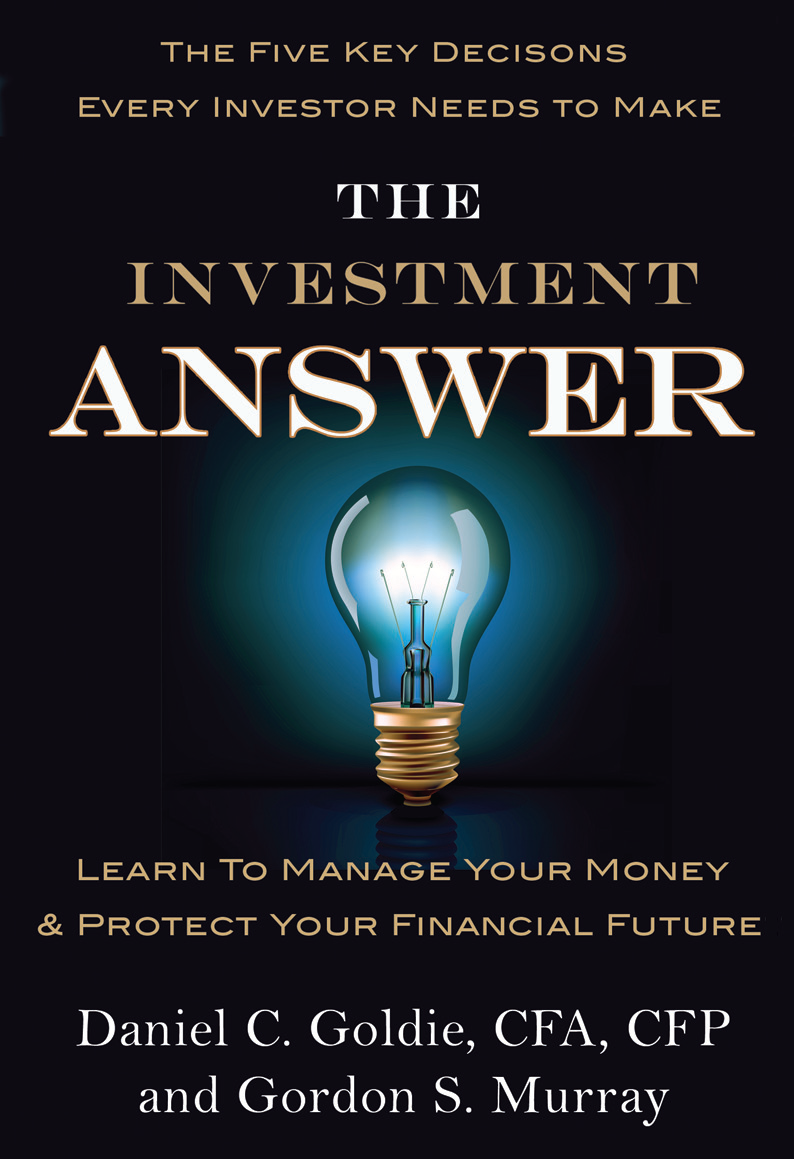October 22, 2013
Emotional Investing

Rising markets bring optimism and falling markets pessimism and fear, that’s a given. But along with these market fluctuations comes a side effect to be aware of: emotional investing.
Emotional investing is just as it sounds –– investment decisions based on emotional reactions, which can cause us to make costly mistakes. Because when it comes to investing, emotion is not a good thing.
Above is a simple graph that highlights the emotional cycle of investing along with five main causes.
1) Overconfidence. Emotional investors overestimate their ability to predict the market which leads to excessive risks.
2) Attraction to rising prices. Emotional investors are attracted/more likely to buy after the price has gone up.
3) Herd mentality. Being part of a group is comfortable; but history has shown us that when the herd moves in one direction, it may be time to consider going in the other.
4) Fear of regret. Not doing anything simply due to the fear of making the wrong decision.
5) Affinity traps. Rather than understanding the whys of an investment, we act based on a recommendation by a friend or a mutual tie to an organization.
How to avoid these emotional reactions when it comes to investing? Discipline, an understanding of how markets work, and a good advisor. For more information on this topic, check out chapter one of The Investment Answer, by Daniel Goldie and Gordon Murray. Or write to us with your questions, we’d love to hear from you.







 Welcome to Money Matters, the official blog of Carlisle Financial Group. Every two weeks we’ll bring you something timely and smart about investing, navigating the markets and strategic financial planning. Whether you have a good understanding of money and investing, or are just getting started, the topics we’ll cover will help to keep you informed, empowered, and moving forward.
Welcome to Money Matters, the official blog of Carlisle Financial Group. Every two weeks we’ll bring you something timely and smart about investing, navigating the markets and strategic financial planning. Whether you have a good understanding of money and investing, or are just getting started, the topics we’ll cover will help to keep you informed, empowered, and moving forward.

